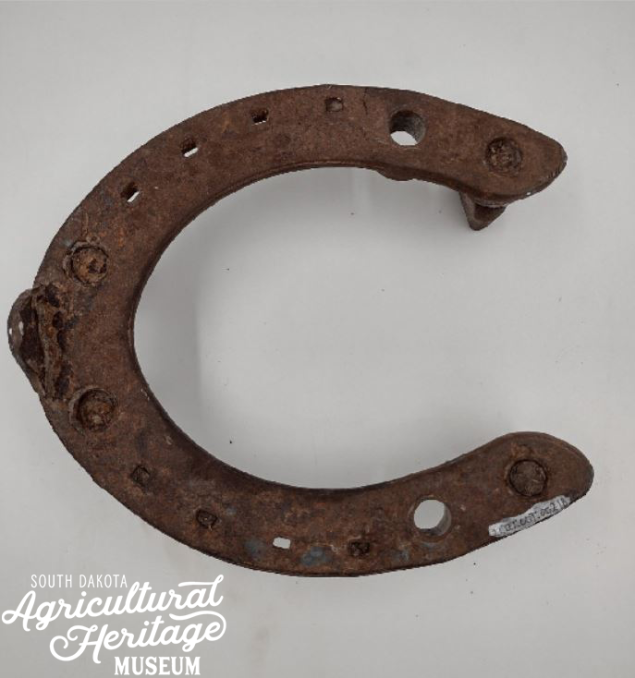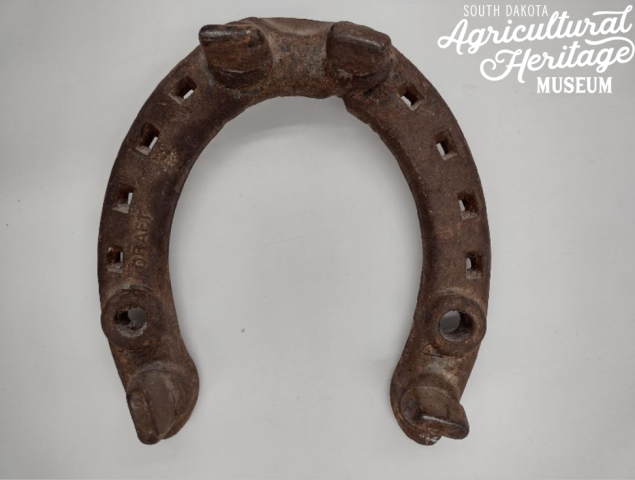

A lucky charm?
Happy early St. Patrick’s Day! This week’s what’s new Wednesday is considered by many a lucky charm, the horseshoe. Horseshoes protect horses’ hooves and can provide traction for the animals in places of poor footing. These horseshoes, considered winter horseshoes, have “calkins” (also known as calks) or studs, which provide stability on ice and snow. Calkins are very useful but special accommodations for the safety of the horse and other animals must be made. Extra bedding must be laid down to keep the calkins from abrading the horse. While working, leg protection must be provided.
Many theories surround the luck of the horseshoe. Some go back to 10th century St. Dunstan, in the Christian tradition, nailing horseshoes to feet of the devil. Others surround the materials themselves. Originally made of iron which would ward off evil spirits, horseshoes also used seven nails. Seven is considered a lucky number. How one hangs the lucky horseshoe over a door is also hotly debated. Some argue that hanging it with the ends up catches luck. Others suggest having the ends down rains luck down on all who enter. Regardless of what horseshoe tradition one ascribes to, the South Dakota Agricultural Heritage Museum wishes all a Happy St. Patrick’s Day full of fun, shenanigans and luck!

